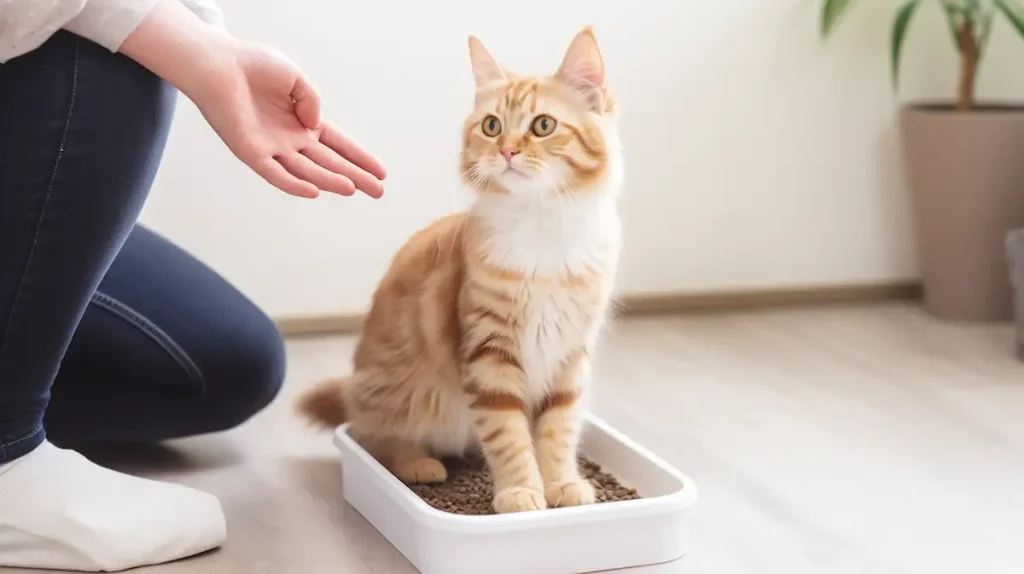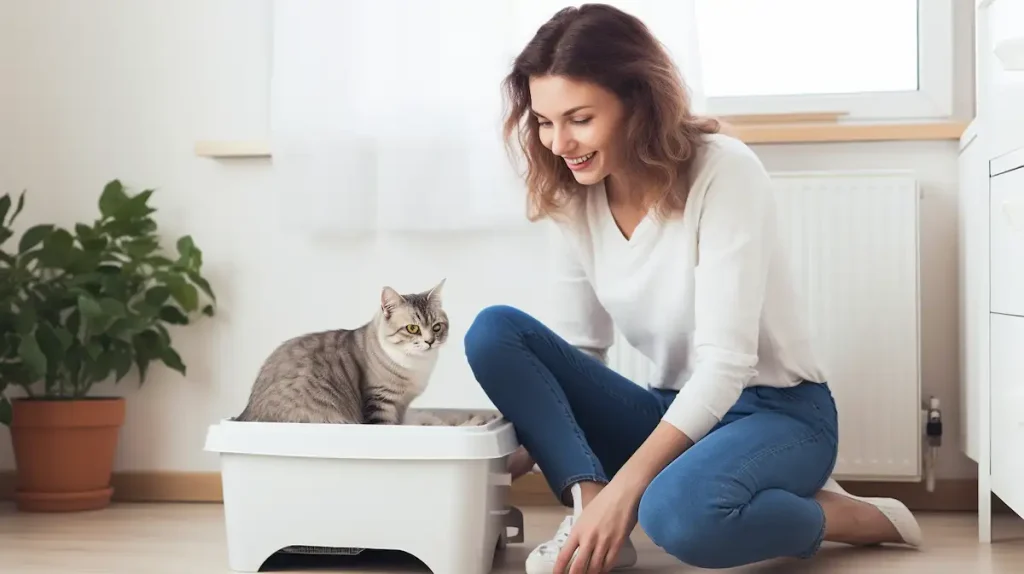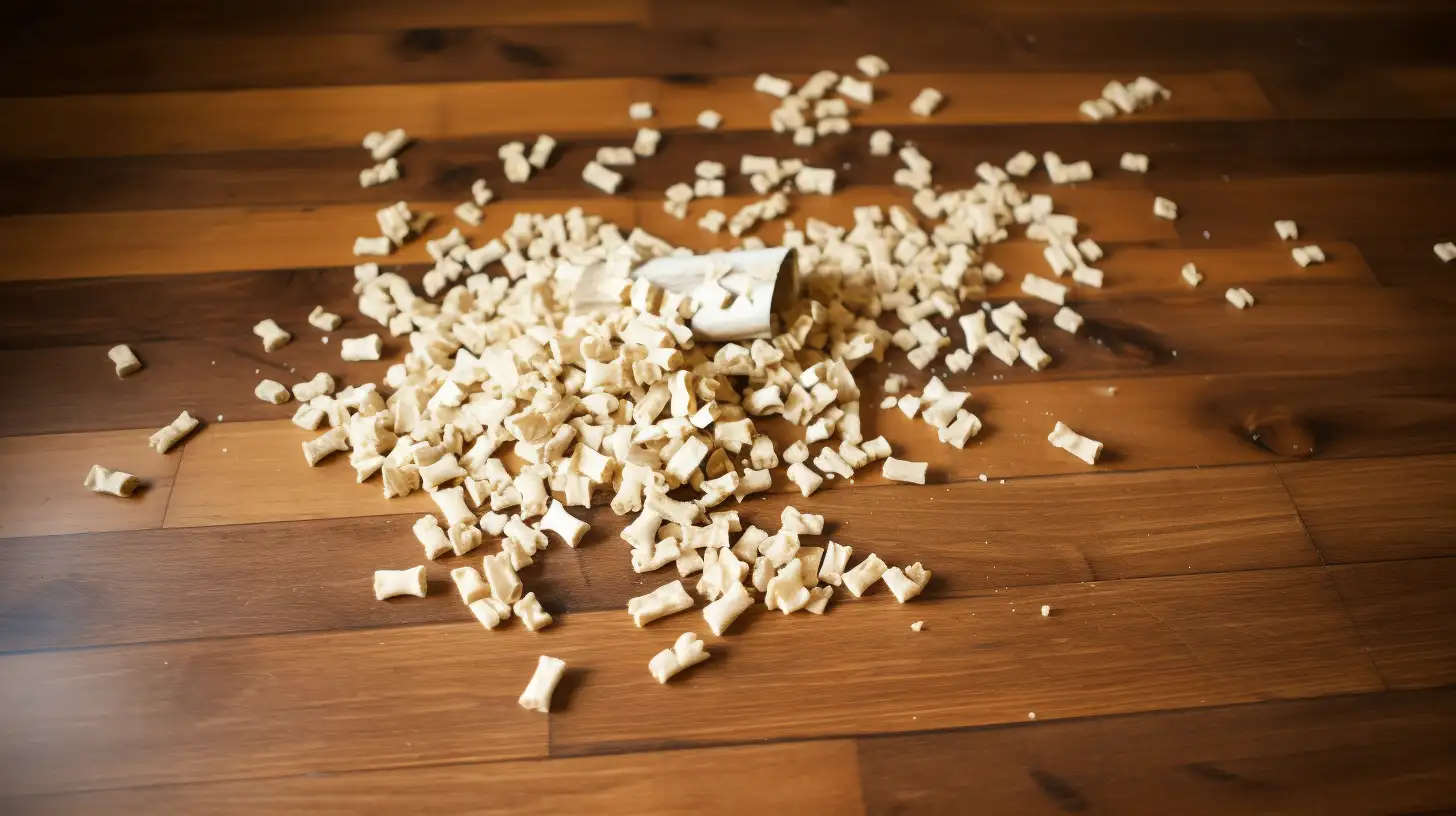As a cat parent, you know the struggle all too well. You clean out the litter box, giving your cat a fresh place to do their business.
But not long after, you notice bits of litter strewn across the floor. Before you know it, your cat has tracked litter all over the house, spreading from their paws to the carpet and hardwood floors.
It gets stuck between your toes, crunches underfoot, and just makes your home feel dirty. Dealing with cat litter scattered everywhere can be frustrating and tedious to clean up.
But there are solutions to contain the mess and prevent it from becoming an issue in the first place. This article will provide helpful tips and litter box setup advice to keep the litter where it should be – inside the box!
Contents
The Messy Problems Caused by Cat Litter Spreading Everywhere
When cat litter is allowed to spread throughout your home, it can lead to some annoying and even hazardous issues. Here are some of the main problems caused by cat litter getting everywhere:
- Health Hazards – Cat litter can contain bacteria, germs, and parasite eggs that can be harmful if spread around your home. Toxoplasmosis is one example, a parasitic disease that can infect humans through contact with contaminated cat feces.
- Dirty and Messy Floors – Bits of clay and clumping litter quickly make a mess of hardwood and tile floors. It gets ground into carpets and rugs too. This requires constant vacuuming to try to clean it all up.
- Litter Between Toes and Feet – If you have cats, you’ve likely experienced the unpleasant feeling of crunchy litter bits lodged between your toes at some point. Litter also sticks to bare feet easily.
- Spread to Furniture and Surfaces – Cat litter gets transported around on paws and fur. It’s not long before it’s on your furniture, countertops, and other surfaces when your cat hops up.
- Difficult to Clean Up Fully – Cat litter is designed to clump and stick. So even meticulous vacuuming doesn’t get it all up. Bits hide in cracks and fabric. It takes real effort to fully remove.
Preventing litter from escaping the box in the first place saves you from dealing with these messy problems!
Why Does Cat Litter Spread So Easily?
Cat litter seems to get everywhere so easily because of some natural cat behaviors and tendencies:
- Kicking and Flicking – As cats scratch and bury their waste, they often kick litter out of the box behind them. Some cats are more aggressive kickers than others.
- Sticking to Paws – Cat litter is designed to clump and stick. So inevitably some amount will stick to your cat’s paws as they exit the litter box.
- Running and Playing – After doing their business, cats often have a burst of energy and take off running, playing, and zooming around. This sends loose litter flying.
- High Traffic Areas – Many litter boxes are placed in high foot traffic spots for easy human access. But this allows litter to be tracked through the home more easily.
- Improper Sizing – Litter boxes that are too small don’t allow enough space for cats to bury their waste. So litter ends up scattered outside the box.
Knowing the reasons why litter spreads readily gives us clues on how to prevent it!
Tips to Contain Messy Cat Litter

Here are some helpful tips and tricks to keep cat litter contained in the box and prevent it from getting all over your floors and home:
Use a Hooded Litter Box – Hooded litter boxes have a top entry and often 3 sides. This contains much of the kicked out litter inside the box rather than spraying it across the room. Look for a hood with a deep lip.
Place Mats Under and Around the Box – Waterproof, rubber-backed mats or liners under & around the litter box catch stray pieces that get kicked out or fall off paws. They keep litter off nearby floors.
Get a Covered Litter Mat – Specialty litter mats have a cover and catch tray to contain loose litter inside. The cat walks across the mat, it catches litter on their paws, then the cover contains the mess.
Use High-Sided Litter Boxes – High-walled litter boxes provide more surface area for litter scatter to hit inside the box rather than outside of it.
Put the Box in a Low Traffic Area – Place the litter box in an out-of-the-way spot that humans don’t walk through often. This prevents us from tracking litter around as much.
Use Litter Box Liners – Liners act as an inner bag, catching loose litter and waste. When changing litter, simply remove the bag of waste rather than scrubbing the box.
Get a Litter Box with Higher Walls – As mentioned before, higher walls on a litter box help contain more flying litter inside when cats scratch and kick. Look for boxes with a steep angled lip.
Use Litter Deodorizing Sprays or Powders – Sprays and powders can be lightly sprinkled on top of litter to help absorb odors and moisture. This also makes it less likely to stick to kitty paws.
Sweep Around the Litter Box Daily – Make it part of your routine to give the area around the litter box a quick once-over with a broom to sweep up any escaped pieces.
Groom Paws After Litter Box Use – Gently wipe your cat’s paws with a damp cloth or dry brush after they use the litter box to remove any clinging pieces before they run off.
Proper Litter Box Setup
In addition to containment tips, setting up the litter box properly in the first place can really help reduce spraying and scattering of litter. Here’s how:
Use the Right Sized Box
Your cat’s litter box should be at least 1.5 times their length. This allows enough room to turn, dig, and cover.
Place It in a Low Traffic Area
As mentioned before, tuck it away in a quiet, low foot traffic spot to prevent humans from tracking litter.
Use Mats Under and Around the Box
Mats, liners, and litter catching trays under & around the box are a key component.
Clean the Box Frequently
Scoop waste at least once daily. Change all litter 1-2 times per month. Cats prefer and use clean boxes.
Train Your Cat to Keep Litter Inside
In addition to containment tools and proper setup, you can also train your cat to be tidier in the litter box and keep the litter inside. Here are some tips:
Reward Immediately After Box Use
Give your cat a treat and verbal praise as soon as they exit the litter box to reinforce the behavior.
Gently Scold Litter Kicking
If you catch your cat aggressively kicking litter out of the box, gently interrupt the behavior with a sound or word like “ah ah!”.
Keep the Litter Box Very Clean
Scoop waste once or twice daily. Change the litter completely every 1-2 weeks. Cats prefer clean boxes.
Use Cat Attract Litters if Needed
For stubborn cats, “cat attract” type litters have scents and textures that encourage litter box use and scratching.
Add More Litter Boxes if Needed
Some multi-cat homes need more than one box to prevent crowding and mess. The general rule is one box per cat, plus one extra.
Check for Underlying Issues
If litter box problems persist, have your vet check for underlying medical issues causing discomfort.
A Cleaner Home is Possible

Dealing with cat litter strewn all about is an annoying reality of being a cat owner.
But with the right tools and training, you can successfully contain the mess and keep your cat’s litter where it belongs – inside the box!
This will mean less time spent vacuuming litter out of floors and furniture, fewer health hazards from germs spreading, and happier kitties who are praised for good litter box habits. Give these tips a try for a cleaner home!
FAQs
What type of litter is least likely to get tracked out of the box?
Lightweight, low-dust litters like wheat or pine tend to not stick as stubbornly between kitty toes. Stay away from heavy clay litters.
Should I get a covered or uncovered litter box?
Covered boxes are best for containing kicked out litter, but some cats don’t like the enclosed feeling. Try out different styles to see what your cat prefers.
How often should I fully replace the litter?
Experts recommend dumping all litter and starting fresh every 2-4 weeks. Scoop daily waste in between full changes.
What can I put under the litter box to catch loose pieces?
Mats, potty pads, or even a tray filled with corn husks can go under the box to catch scattered litter when your cat exits.
Should I put the food and water bowls near the litter box?
No, cats don’t like their food area being too close to the bathroom. Keep food/water across the room from litter.
How can I keep litter off my cat’s paws when they exit the box?
Place a mat, groom paws with a wipe, or consider a sifting litter box that strains out waste below.
Struggling with cat litter mess? This article provides tips to contain litter scatter, including high-walled litter boxes, mats, proper location, training cats, and more for a cleaner home.


